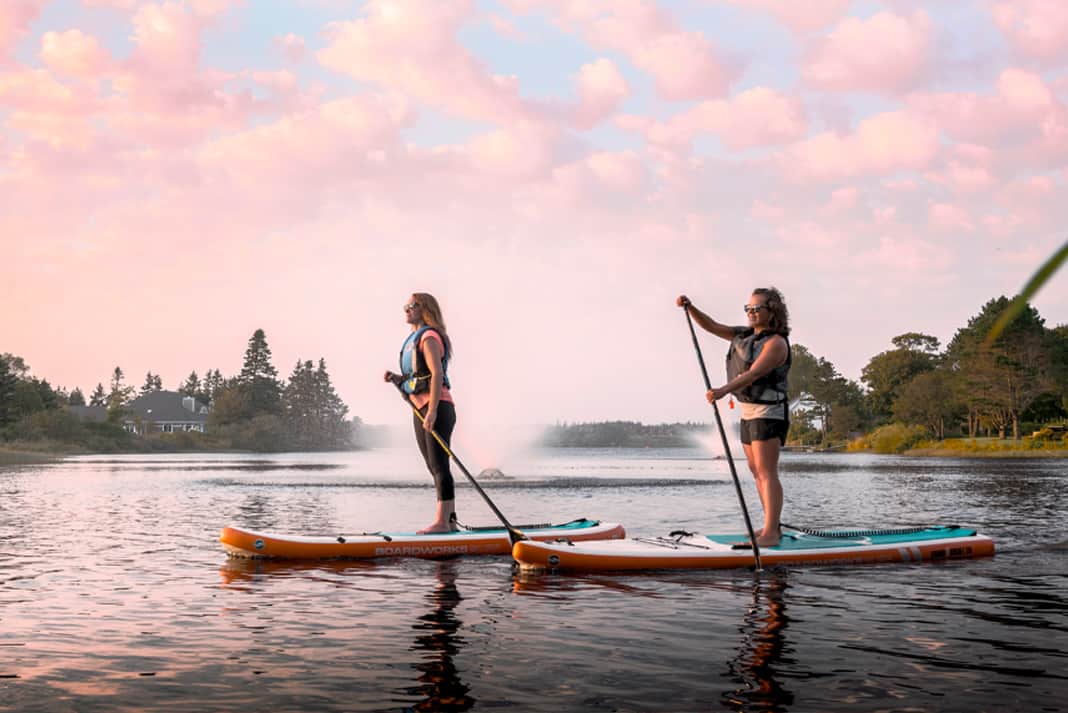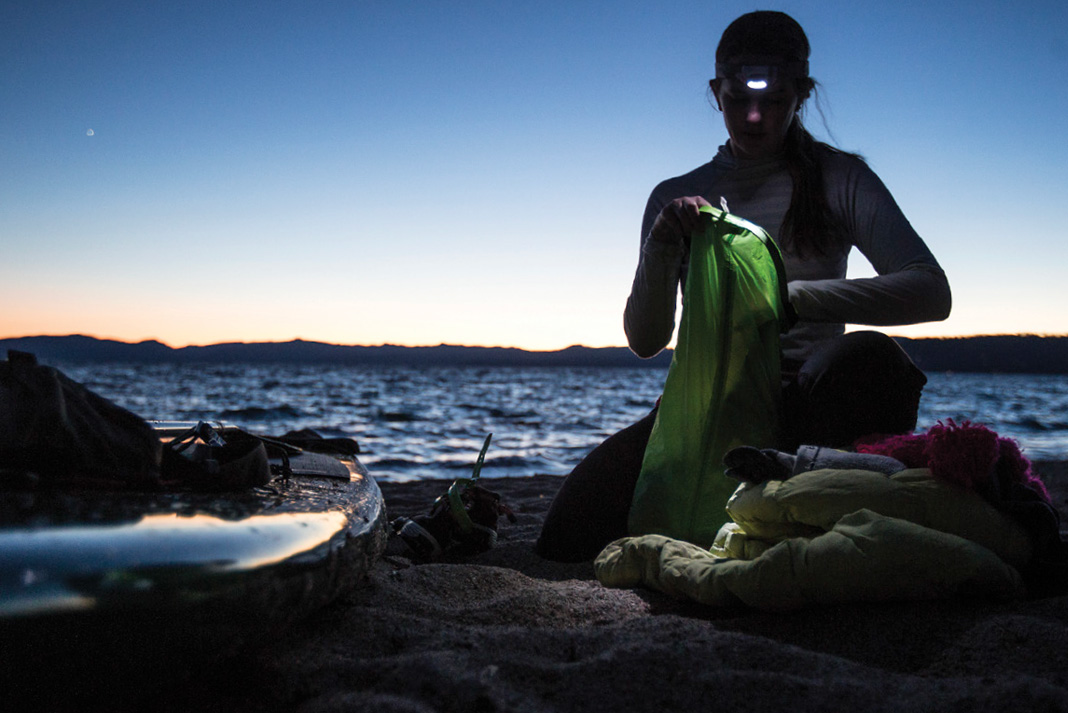Buying a used paddleboard can save you a bundle of cash on retail markup and taxes. For the price of a new, entry-level plastic paddleboard, you can buy a pre-owned top-quality composite or inflatable board that will be a pleasure to paddle for years. Costly accessories are often thrown in. But all sales are final and there are no guarantees, so consider these tips before you buy.
Pick a design
Research what kind of board you want. To novices, a board is a board. But there are a lot of differences between recreation, touring and surfing designs, with dimensions for different sizes of paddlers.
Unless you’re planning to do at least some actual surfing, the ubiquitous all-arounders you see in SUV and tourism ads are not ideal, according to expert Steve Martin, who sells a lot of used boards in monthly gear swaps at his Boardsports shop in Toronto, Ontario.
Most generalists are better off on a pointy-nosed recreational touring board or even a race board if you’re athletic, which are lightweight, fast and often steeply discounted because racers are compulsive upgraders. If you’re a small paddler, now’s a good time to get a deal on a 12.5-foot race board, because a lot of racers are switching to 14-footers.
Consider materials
Use the savings of buying used to upgrade to a lightweight, higher-performance board, such as one made of fiberglass or carbon with a foam core. It’ll cost about the same price as a new plastic board from a big box retailer.
Know the brands
Top-brand boards are built to last and worth a premium; they’ll have durable composite construction to endure abuse and contain closed-cell foam that absorbs less water when damaged.
Boards from Thai and Vietnamese factories have good reputations; some from China, not so much. Notably, Cobra International in Chonburi, Thailand, is known for crafting high-quality boards for the brands Starboard, Naish and Fanatic, among others.
Try before you buy
Test paddle as many boards as you can from friends, outfitters or demo events. It’s smart but logistically challenging to test the board you’re actually buying since you’ll most likely be looking at it in the seller’s front yard. If you already know how the board performs, you’ll be ready to commit before another buyer beats you to it.
Find a source
When it comes to where to buy a used paddleboard, you’ll want to find a reputable shop or online source specializing in paddling. Some shops and clubs host gear swaps or maintain their own online classifieds. Shops may have previous season’s clearance boards and demos for sale at used prices.
Ask local SUP outfitters and schools if they ever renew their rental fleet. Visit Paddle Monster for the most extensive listing of used boards from across North America.
Ask questions first
Don’t make the mistake of driving two hours to pick up a used standup paddleboard that’s not the length you wanted. Look for online ads including photos and complete specs for length, width and volume—or ask for them. Ask how old the board is, if there’s any damage, how and where it’s been stored, and what accessories are included.
“You want to deal with someone who paddles,” says John Beausang, who has been listing used boards for a decade as the publisher of The Mullet (now Paddle Monster). “Ask them if they paddle, where they paddle, why they want to sell. That will knock out a ton of people who you wouldn’t want to have a transaction with. The better educated the buyer and seller are, the better exchange of value and the less likely they are a scammer.”
Meet in person
“Dealing face-to-face will avoid 99 percent of scam attempts,” says Beausang. “Unless you know them, don’t go to meet sellers or buyers alone. Meet in a public place, preferably one with grass and not in a parking lot where they can drop the board. Do not pay anyone who can’t meet you in person. Beware of offers involving shipping. Anyone who wants to wire funds is sketchy. Run away.”

Check for damage
The first thing you should do, according to Martin, is lift a board up. “If it’s heavy and waterlogged, then it’s not worth it.” Dings on a composite board are easily repaired with fiberglass and epoxy at home or by a shop, as long as the board hasn’t absorbed water. Damage can actually be your best friend.
Not only will it lower the resale value of the board—without necessarily harming performance—but it can also reveal a lot about the board’s durability. Some boards easily crack and chip and develop mushy spots while others endure wear and tear. Focus on the forward rails where the paddle rubs as well as any sharp ends or corners. You can tell if a ding has breached the shell by “kissing” and blowing air into it.
Look for a deck pad that’s in good shape and not coming unglued; these are hard to repair because the old one has to be removed first. Check that the fin is straight. A crooked fin can reveal internal damage to the fin box, which is tough to fix. Check out how the board has been stored—indoors? On a rack? In a bag?—as an indication of how it’s been cared for.
Observe any stickers or tape slapped on as hasty repairs or to conceal damage. Make sure drain screws and fin screws are present and secure. If it’s an inflatable board, inspect the seams and welds. Fully inflate the board and take it to the water or wait a couple of hours to check for pinhole leaks.
Don’t forget accessories
Remember to budget for accessories, which can add a lot of value. A savvy seller will keep their accessories, but if they’re getting out of the sport they may throw in a PFD, paddle and leash. Always ask if any of these can be included in the deal. Ditto for a storage bag, which can run $150 to $300 or more new.
Never skimp on the paddle, which is at least as important as the board. “If you’re saving money on the board, get a better paddle, a carbon paddle,” says Martin. “I’d rather be on a crappy board with a good paddle than be on the best board with a crappy paddle.”
Agree on price
You’ve done your research, so you should know the market value going in. Less experienced sellers are more likely to overvalue their boards. So, how much are used paddleboards? The markdown on a used board should be significant. Martin suggests 50 percent of MSRP as a guideline for a board that’s being sold final sale without a warranty, even if it’s brand new, “like a car as soon as you drive it off the lot.”
Used prices should drop from there. $600 or more is typical for a composite recreational board, or $1,500–$2,000 for a great deal on a lightly used carbon race board. Don’t be afraid to haggle for a fair price, but be nice. You’re probably saving enough that you don’t need to scrabble for an extra $50.
Maintain good vibes
Remember the paddling community is small. Both sides should feel it’s a fair deal, not least because you may run into each other on the water.
“Use the transaction as a way to connect to other paddlers,” advises Beausang. “You’d be surprised how many friends I have that started from selling or loaning them a board. Also, many boards are like family members to the owners. They will want to sell them, but also knowing they are going to a good home makes a difference. Knowing the boards will get on the water, where they belong, makes a difference.”




